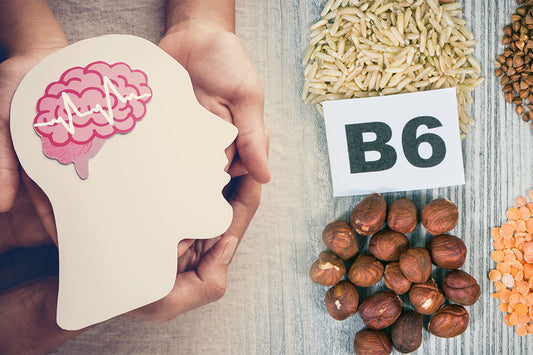In today’s fast-moving world, most of us find our minds bouncing from one thing to another—work tasks, messages, chores, and worries. It’s easy to feel overwhelmed. Maybe you’ve heard people say “try mindfulness” or “start meditating” but felt unsure about what that really means. Are they the same thing? How do you even begin?
If you’re mixed up about mindfulness and meditation, here’s your simple guide to blissful living. We’ll walk you through what they are, how they differ, and how they can help you reconnect with yourself, one moment at a time.
What Is Mindfulness, Really?
Mindfulness simply means being fully present. It’s about paying attention to what’s happening right now without judging it. Whether you’re eating, walking, or brushing your teeth, practicing mindfulness means focusing completely on that activity. You notice the sounds, textures, smells, thoughts, and emotions—just as they are.
Think about how often your mind wanders while doing everyday things. You might be sipping coffee but thinking about your next meeting. You’re physically there, but mentally, you’re somewhere else. That’s where mindfulness helps—by gently bringing your attention back to the present moment.
Mindfulness in Daily Life
You don’t need to sit cross-legged in silence to practice mindfulness. You can do it anytime, anywhere:
- Eating: Notice the taste, smell, and texture of your food.
- Walking: Pay attention to the feeling of your feet touching the ground.
- Listening: Truly hear what someone is saying, without planning your reply.
- Breathing: Focus on your breath, even if just for a minute.
Mindfulness is not about having a blank mind. It's about noticing when your mind wanders—and gently bringing it back.
What About Meditation?
If mindfulness is a way of being, meditation is a tool to help you get there. Meditation is a practice where you intentionally take time to train your mind to focus. It’s usually done in a quiet setting with your eyes closed, although not always.
The idea is to sit with yourself, notice your thoughts, and practice coming back to your breath, a sound, or a phrase. Meditation is a practice—meaning it gets easier with time and repetition. Even five minutes a day can make a difference.
Types of Meditation
There are many ways to meditate, but here are a few common ones:
- Breath-Focused Meditation: You sit quietly and follow your breath as it moves in and out.
- Guided Meditation: A voice leads you through a calming story or practice.
- Body Scan Meditation: You focus on different parts of your body, one at a time.
- Loving-Kindness Meditation: You silently send good wishes to yourself and others.
Each of these is a form of training your mind to come back to the now.
Mindfulness vs. Meditation: What’s the Difference?
While they work hand in hand, mindfulness and meditation are not the same:
- Mindfulness is a quality—a way of living with awareness.
- Meditation is a set time you spend training your mind.
You can practice mindfulness throughout your daily life. Meditation helps you build the strength and patience to do that.
Think of it like this: meditation is your mental workout; mindfulness is how you carry that strength into your day.
Why Do These Practices Matter?
You may be wondering: Why bother with all this? The truth is, mindfulness and meditation can help ease common discomforts like mental clutter, restlessness, and emotional overwhelm. They don’t erase life’s challenges—but they help you respond to them with more calm and clarity.
When you train your mind to return to the present moment, you stop running on autopilot. You start noticing small joys: the taste of your tea, the warmth of sunlight, a kind word from a friend.
People who practice mindfulness and meditation often say they feel more connected—to themselves, their loved ones, and life in general. It’s not magic, and it doesn’t happen overnight. But with regular practice, it can gently restore your sense of balance and presence.
How to Get Started (Even If You're Super Busy)
You don’t need a quiet room, incense, or an hour of free time to begin. Here are some simple ways to start practicing mindfulness and meditation in your daily life:
- Start Small
Begin with just 2–5 minutes a day. Sit quietly, close your eyes, and follow your breath. When your mind wanders (and it will), gently return your attention to your breath.
- Use a Timer or App
There are free meditation apps that guide you through short sessions. Set a reminder to practice at the same time each day, like before bed or after your morning coffee.
- Be Kind to Yourself
It’s normal for your mind to wander. The goal isn’t to stop thinking—it’s to notice that you’re thinking and return to the moment.
- Bring It Into Your Routine
Try brushing your teeth or washing your hands mindfully. Feel the water, notice the movements, and be fully there.
- Practice Gratitude
Spend one minute each day naming three things you’re thankful for. This simple act helps ground you in the present.
Final Thoughts: A Simple Path to a Calmer Life
If you’ve ever felt mixed up about mindfulness and meditation, you’re not alone. The good news? You don’t need to figure it all out at once. Just take one small step toward being more present today.
Meditation is a practice, and mindfulness is the life it supports. Together, they create a space where you can feel more aware, more centered, and more connected—without needing anything fancy.
In a world that often pulls us in every direction, training your mind to return to the present moment is a powerful way to help ease everyday stresses and reconnect with your inner calm. With time and practice, blissful living isn’t just an idea—it becomes your natural way of being.






